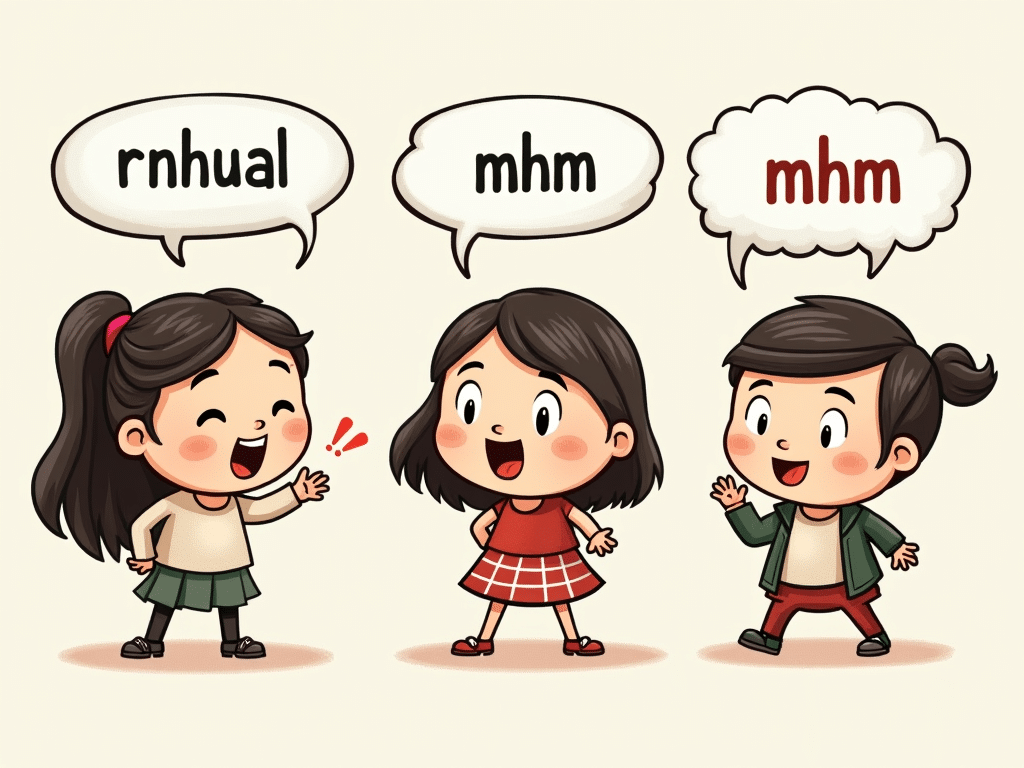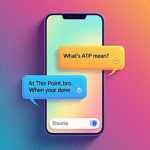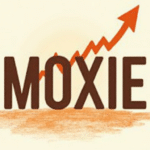Ever been in a conversation where someone just goes “mhm” and you’re left wondering what they really mean? Well, you’re not alone! This little sound might seem simple, but it’s got more layers than an onion. Let’s dive into the world of “mhm” and uncover its secrets!
| Key Takeaways |
|---|
| 1. “Mhm” is a versatile interjection used to show agreement or understanding |
| 2. It can mean different things based on tone and context |
| 3. “Mhm” has roots in the 1920s and possibly Native American languages |
| 4. It’s used differently across cultures and regions |
| 5. Understanding “mhm” can improve your communication skills |
“Mhm” Meaning: The Tiny Sound That Says a Lot 🤔
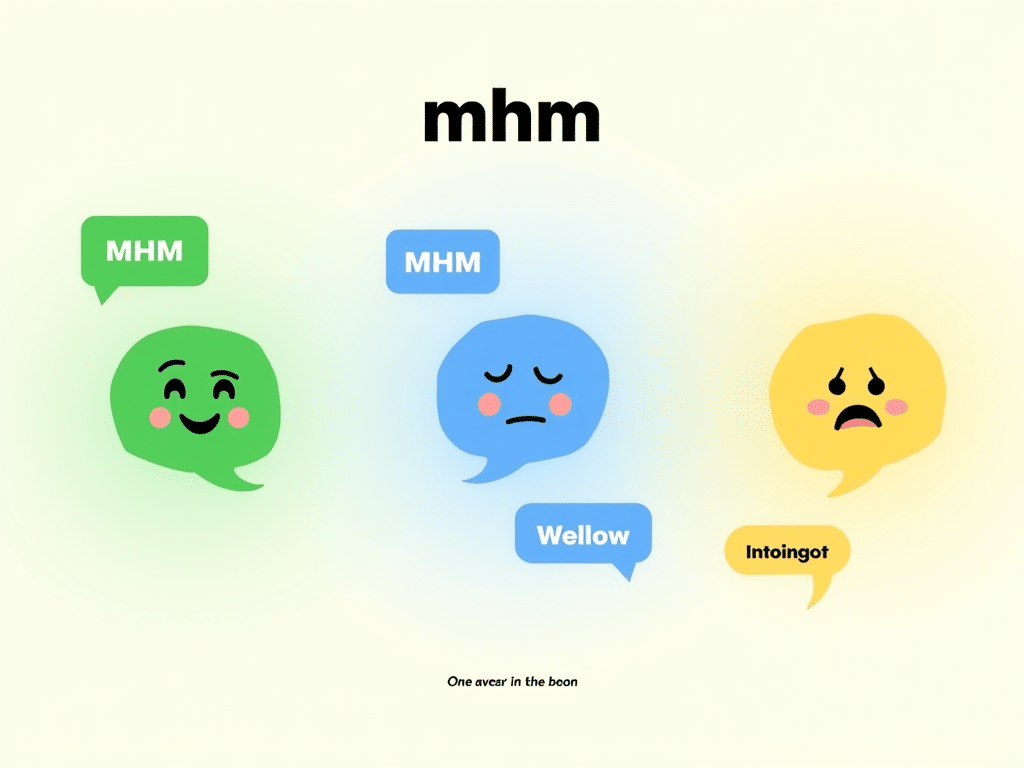
What Does “Mhm” Actually Mean?
Alright, let’s break it down. “Mhm” is like the Swiss Army knife of sounds. It’s an interjection that can mean a bunch of different things:
- Agreeing: Like when your friend says, “That movie was awesome!” and you go “Mhm!”
- Understanding: Imagine your teacher explaining something and you’re nodding along, “Mhm, mhm.”
- Satisfaction: Picture taking a bite of your favorite food and going “Mhm!” 😋
- Encouraging: When someone’s telling a story and you want them to continue, a well-placed “mhm” can keep them going.
It’s like a verbal nod, but way cooler. And tbh, it’s way easier than forming whole sentences sometimes, am I right?
The Origin Story of “Mhm”
Now, you might think “mhm” just popped out of nowhere, but it’s got some history!
Legend has it that “mhm” might have roots in the Native American Potawatomi language. But don’t quote me on that in your history essay just yet! What we do know is that it evolved from “mm-hmm” sometime in the 1920s or 1930s.
It’s like the language equivalent of a catchy tune that everyone started humming without realizing it. Before you knew it, “mhm” was everywhere!
How to Say “Mhm” Like a Pro
Okay, so saying “mhm” isn’t rocket science, but there’s still a right way to do it. Here’s your crash course:
- Start with your lips closed, making an “mmm” sound.
- Then, open your mouth slightly to add the “hm” part.
- The whole thing should sound like one smooth sound, not two separate ones.
And voila! You’ve just mastered the art of “mhm”!
But wait, there’s more! “Mhm” has some cousins too:
- “Mm-hmm”: The fancy, spelled-out version
- “Uh-huh”: The laid-back cousin
- “Yep”: The snappy relative
Each one has its own vibe, so choose wisely!
“Mhm” Around the World
Here’s where it gets really interesting. “Mhm” might seem universal, but it’s not! Different cultures have their own ways of saying “yes” without actually saying “yes”:
- In Japan, they often use “un” (うん) for a casual “yeah”
- In Spanish, “ajá” is like their version of “uh-huh”
- In French, “ouais” is the casual “yep”
So if you’re chatting with your international fam, keep these differences in mind. You don’t want your “mhm” to get lost in translation!
Mastering the Art of “Mhm”
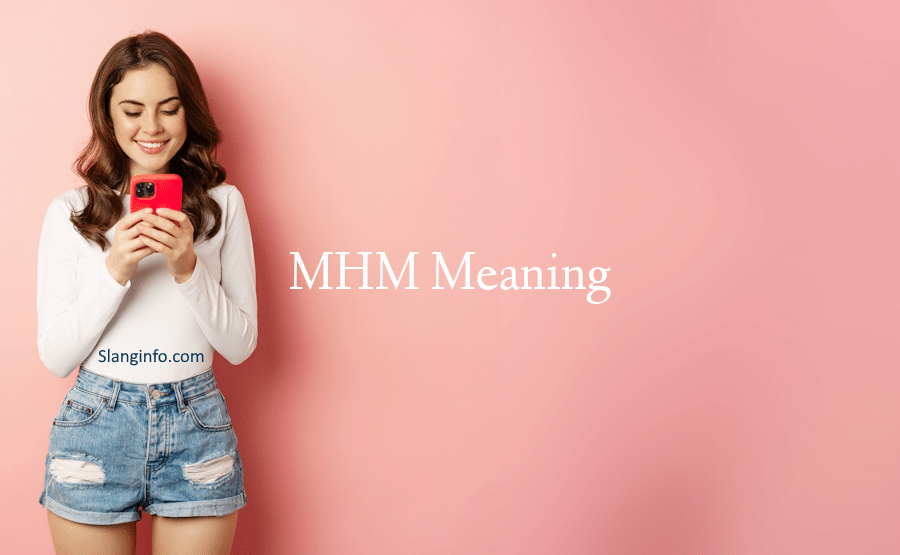
Alright, so now that you know what “mhm” means and how to say it, let’s talk about using it like a pro. It’s not just about making the sound; it’s about the vibe you give off with it.
Picture this: your friend is telling you about their day, and you hit them with a flat “mhm.” Ouch, right? It’s like saying, “I’m not really listening, but go on.” 😬
Now imagine the same situation, but you give an enthusiastic “mhm!” with a smile. Suddenly, your friend feels heard and validated. That’s the power of a well-placed “mhm”!
Here are some tips to level up your “mhm” game:
- Match the tone: If someone’s excited, give an upbeat “mhm!” If they’re serious, keep it low-key.
- Use body language: A head nod or a smile can make your “mhm” feel more genuine.
- Don’t overdo it: Too many “mhms” can make you sound like a broken record. Mix it up with other responses.
Remember, a good “mhm” is like a secret handshake. It shows you’re on the same wavelength as the other person. 🤝
“Mhm” vs. Other Affirmative Responses
Now, you might be thinking, “Why use ‘mhm’ when I can just say ‘yes’ or ‘yeah’?” Well, my friend, it’s all about the nuance.
| Response | When to Use It |
|---|---|
| Yes | For a clear, formal affirmation |
| Yeah | To show casual agreement |
| Uh-huh | When you’re following along |
| Mhm | To show understanding and encourage the speaker |
See? Each one has its own special sauce. It’s like choosing the right emoji for your text message. You wouldn’t use a 🎉 when your friend tells you they’re sick, right? Same idea!
The Bottom Line on “Mhm”
At the end of the day, “mhm” is a small but mighty word. It’s a way to show you’re listening, you understand, and you want to hear more. And in a world where we’re all craving connection, that’s a pretty powerful thing.
So the next time you’re in a conversation, try throwing in a well-timed “mhm.” You might be surprised at how much it can change the vibe. And who knows, you might just start a “mhm” revolution! 😎
But hey, don’t just take my word for it. Go out there and experiment with “mhm” yourself. And while you’re at it, why not check out some other cool slang terms like yeet, bruh, or simp? Trust me, your conversations will never be the same.
So go forth, my friends, and “mhm” your way to better communication! And remember, as the wise philosopher Snoop Dogg once said, “Mhm, mhm, mhm, mhm, mhm, mhm, mhm, mhm, mhm.” 🎤

